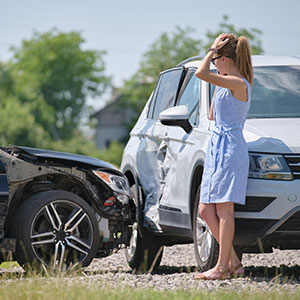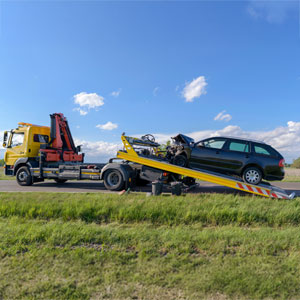CDC Reports Statistics on Teen Driving Deaths
Car AccidentsThe CDC reports statistics that six teenagers are killed in car accidents across the country on average every day. Many of these accidents are due to distracted driving.
The Impact Of Teenage Driving Touches Everyone
Most of us become better drivers through many years of experience on the roadway and being exposed to a variety of different situations involving traffic, weather, and drivers who break the rules. However, all of us with many years of experience on the roadway had to start at some point with no experience. The statistics tell us that this is the most dangerous point for a driver in their lifetime.
In 2015, the CDC says that 2,333 teenagers between the ages of 16 and 19 died in car accidents. Teenagers are approximately 3 times more likely to be involved in a fatal crash that drivers over age 20. Further, 221,313 teenagers were treated for injuries in emergency rooms across the country after a crash.
Meanwhile, the Insurance Institute for Highway Safety (IIHS) reports that people aged 15 to 19 were responsible for 11% of the total costs of car accidents but yet they make up only 7% of the United States’ population. In total, the losses reported for teenage driving accidents in 2013 was $10 billion.
Young Men Are The Most At-Risk For A Fatal Accident
For 2014, the CDC statistics report the death rate for teenage males was twice as high as teenage females.
The CDC’s statistics indicate that teenage drivers are more likely than older drivers to engage in risky driving behaviors such as speeding and following too closely. In 2014, 36% of fatal crashes involving a male teenage driver involved speeding at the time of the crash and 24% of those crashes involved alcohol. Interestingly, “the presence of male teenage passengers” was found to increase the likelihood of speeding or following too closely.
What Other Factors Contribute To The Statistics?
According to the CDC statistics, the following are all other circumstances that significantly increase the risk of a fatal accident to a teenage driver:
- 50% of fatal accidents occurred in the afternoon or at night, with with 53% of those fatalities occurring on a Friday, Saturday, or a Sunday
- Critical decision making errors on the roadway
- Lack of seat belt use, particularly with other teenage passengers in the car (peer pressure)
- 17% of fatal crashes involved alcohol
What Can Be Done To Help?
The best way to improve the statistics is for parents to talk to their teenagers about not becoming a statistic. Telling or instructing teenagers will often lead to denial or a desire to do the opposite of what they are told. The statistics are real and the conversations that need to be had should be as well.
Parents should find ways to talk about the most dangerous aspects of driving in ways that teenagers will listen such as:
- handling inexperience on the roadway
- if and when passengers are allowed
- driving at night
- wearing the seat belt
- avoiding distractions such as music and phones
- driving tired
- driving recklessly
- never driving drunk or impaired
Parents should be careful not to “scare” their children into a bad situation. When it comes to alcohol, a parent should say to their teenager that it’s okay to call for a ride if they’ve been drinking and that they won’t be judged for it. Children who fear a consequence will feel the need to run the risk of driving under the influence.
Practice makes perfect when it comes to driving. Free resources are available to improve driving skills including this 100% free road sign driving test.
Talk About Legal Responsibility
Legal responsibility has two components-civil and criminal. Most teenagers are probably more afraid of criminal responsibility than civil.
When someone dies in a car accident and alcohol is not involved, it may very well be just an accident (even if it involves reckless driving). However when alcohol is involved and someone dies in an accident, the driver can face a charge of DUI manslaughter which carries a mandatory minimum sentence of at least 4 years.
For a teenager, that means that everyone else will graduate and move onto jobs or college while you will be in state prison. That is no way to begin your adult life.
As for civil responsibility, teenagers should be told that a civil judgment can be renewed for up to 21 years and that a civil judgment for killing someone else in a DUI accident cannot be discharged in bankruptcy. A DUI crash may also result in punitive damages.
Contact A Personal Injury Lawyer For Answers To Your Car Accident Questions
This information is provided to be helpful rather than hurtful. However, if you or someone you know has been injured in a car accident in Polk County, Florida, you should contact a Lakeland personal injury attorney for help with your case. A consultation with a personal injury attorney is free.


